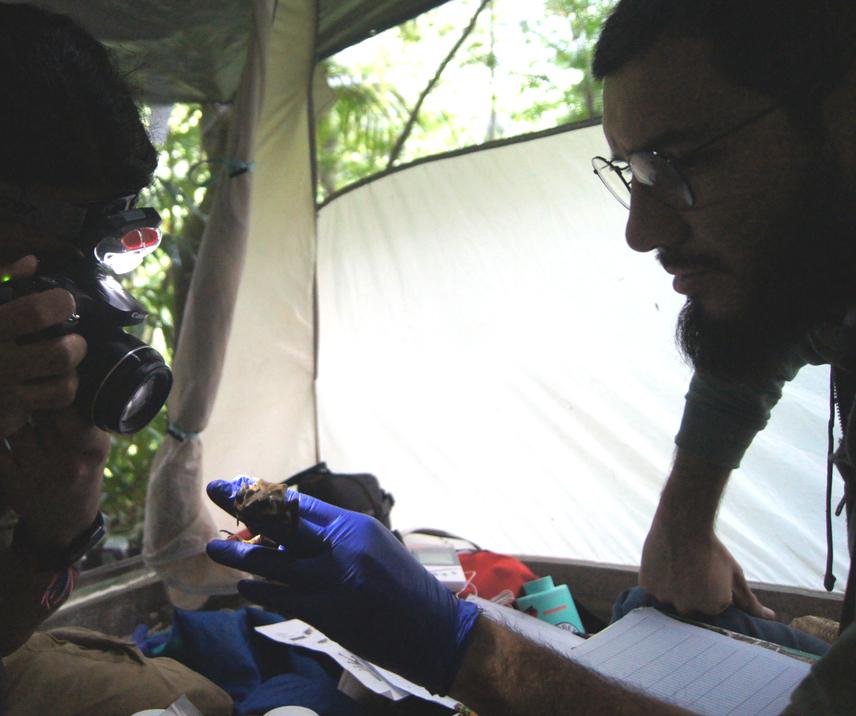E. Aarón Chávez-Ramírez
The term disturbance is defined as a relatively discrete event in time that modifies the structure of a population, community, or ecosystem, resulting in the modification of resources. The importance of the disturbance lies in the fact that this event releases resources that are easy to use, in addition to renewing the ecosystems if the magnitude of the disturbance does not significantly interfere with local germplasm sources, characteristics that differentiate it from the disturbance. Disturbance is a term associated with activities of human origin and has been defined as the effect on an ecological component, which shows deviation from its reference values, and usually has direction, magnitude, and persistence.

On the right E. Aarón Chávez-Ramírez, who is the leading the project. ©Grisel Oaxaca-Oñate.
The scientific value of this research lies in understanding how the natural disturbance regime of treefall shapes amphibian communities from its facets of taxonomic and functional diversity. This approach makes it possible to identify species (and the value of their response traits) that have the capacity to colonize these new environments generated under the canopy openings, but also to identify other species (and the value of their response traits) that are specialists in forest interior habitat and do not tolerate canopy openings; therefore, they can be considered bioindicators of edge effects (both species and certain ranges of values of some traits). It would be expected that in scenarios of anthropogenic degradation of the forest (eg, wood thinning) or reduction in size due to the increase in the agricultural frontier, the species that colonize canopy openings can survive, while the specialists in the interior of the forest would have processes local extinction. The project will also identify key environmental and structural variables (and their ranges of values) to propose habitat conservation strategies for these species sensitive to canopy openings.
Based on this information, it will seek to identify leaders within the Zoque-Popolucas indigenous communities, with the aim of organizing brigades for the protection, surveillance and monitoring of the forest. With this we seek to reduce the degradation of the biocultural heritage of this ethnic group and recover its identity with its own ancestral worldview about the jungle and amphibians. The integration of indigenous and non-indigenous society is one of the objectives that we pursue together with our anthropologist friends and educators from ONG “El Timbre", without them the rescue of an ancestral culture like the Zoque-Popoluca for the loss of its natural heritage would not be possible.
Header: “Santa Marta Volcano”, one of our canopy openings inside the volcano. © E. Aaron Chávez-Ramírez.